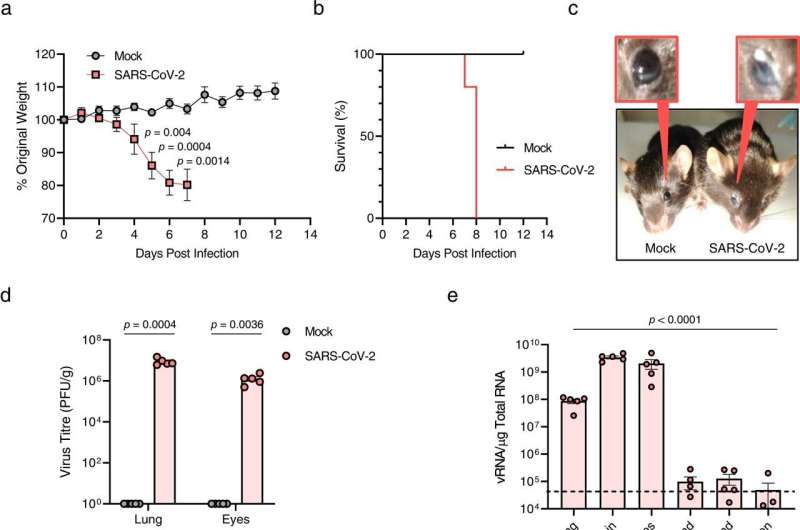COVID-19 virus can affect vision and depth perception, finds study

Researchers are investigating whether the COVID virus can affect vision and depth-perception of those infected.
The study, co-led by Griffith University's Menzies Health Institute and South Korea's Center for Convergent Research for Emerging Virus Infection, Korea Research Institute of Chemical Technology, aims to understand how SARS-CoV-2 affects the eyes and whether it could serve as a virus infection route.
It found the eyes and the trigeminal nerves are susceptible to the virus and that (in animal models) SARS-CoV-2 can infect the eye through the respiratory tract, via the brain.
Principal Research Leader and co-lead author Prof Suresh Mahalingam said the virus can begin to affect vision when inflammation of the optic nerves, abnormal fluid build-up, and immune cell infiltration cause the retina to get thicker.
"The virus can infect the eye through nerve tissues at the back of the eye that play a role in the visual aspects of the eye and sending signals for visual purposes," Prof Mahalingam said.
"The result of this retinal inflammation was a reduction in depth perception due to blurred vision."
This blurred vision does appear to be symptomatic only, not a permanent degeneration of the eye tissue.
It is also only likely to affect a very small number of people.
Griffith University Ph.D. student Mr. Ng Wern Hann said that while a lot of COVID research has been focused on respiratory infection, particularly in the lungs and nasal region, there has not been much focus on the eyes.
"We found the virus can indeed infect the eye through a normal intranasal approach, but also if droplets of the virus make direct contact with the eye," he said.
"The ACE2 receptor is what the virus attaches to in order to infect a particular cell in a tissue or organ, and this receptor is found in abundance in the lungs, tonsils, nasal cavity, kidneys and heart, which is why a lot of reports have been published for those organs, but we found ACE2 receptors are also present in the eye, therefore facilitating infection."
The findings published in Nature Communications give new insights into COVID-19 disease and may facilitate the development of treatment strategies for patients.
More information: Gi Uk Jeong et al, Ocular tropism of SARS-CoV-2 in animal models with retinal inflammation via neuronal invasion following intranasal inoculation, Nature Communications (2022). DOI: 10.1038/s41467-022-35225-1



















